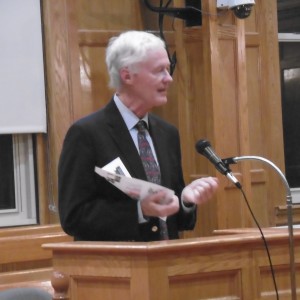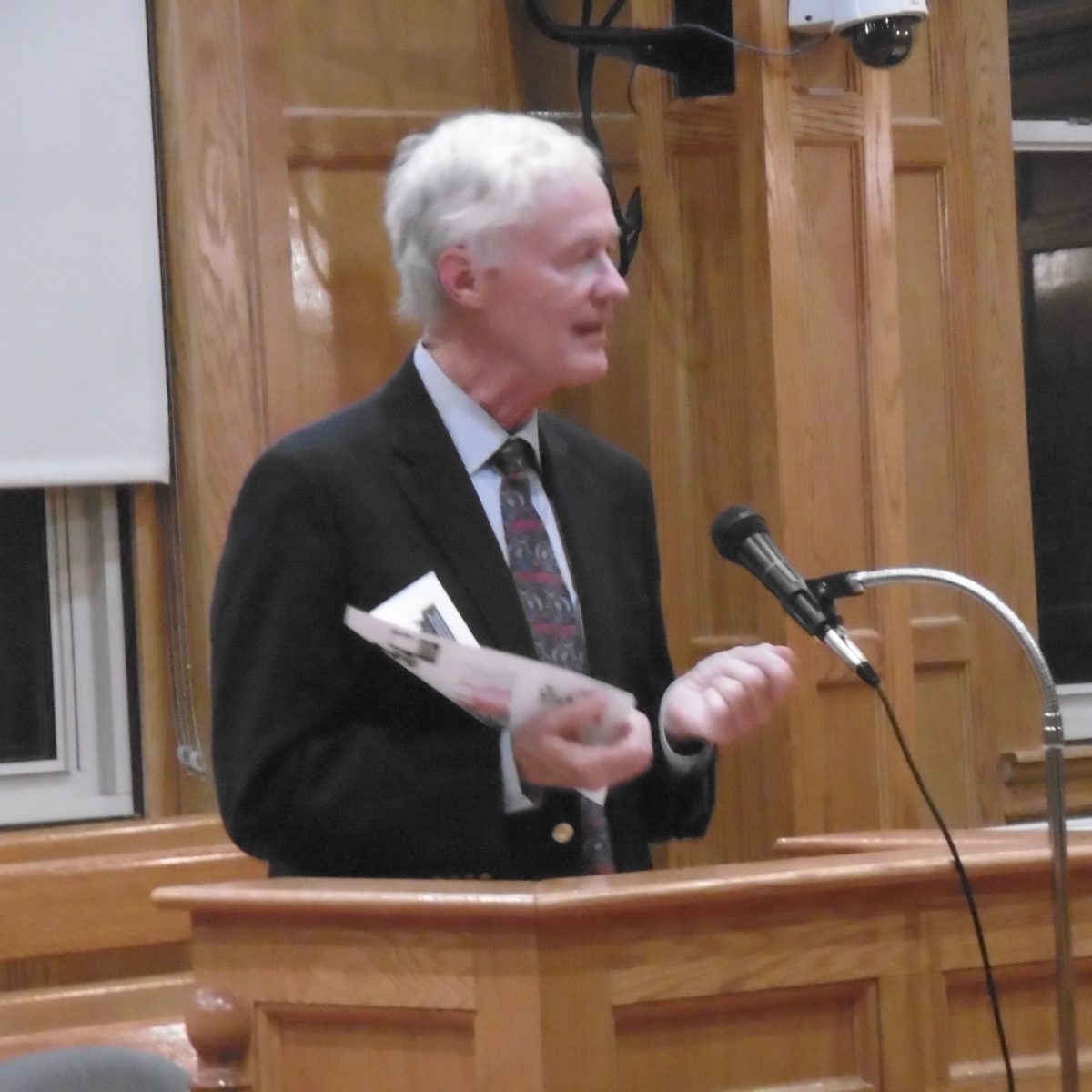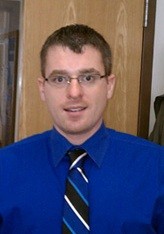
Retired Pioneer Valley superintendent Kevin Courtney at the School Committee Monday evening. (Photo by Amy Porter)
WESTFIELD – At Monday’s School Committee meeting, members heard a presentation by Kevin Courtney on the New Superintendents Induction Program. Courtney, a retired superintendent, serves as coach for Westfield Public Schools Superintendent Stefan Czaporowski. He said the program is in its seventh year, and is currently working with 150 new superintendents in the Commonwealth.
Courtney said the program is the brainchild of the State Department of Elementary and Secondary Education (DESE) in partnership with the Mass. Association of School Superintendents (MASS). It focuses on curriculum and individual coaching. Superintendents attend eight content days in Marlborough the first year, and six the second year, along with receiving six hours of individual coaching a month. Individual coaching can take place on the phone, in leadership teams, or in the schools.
Courtney said that coaches are also trained regularly to make sure they’re “at the top of their game.” Courtney retired in 2008 from the Pioneer Valley Regional School District in Northfield, where he served as superintendent for twenty years, and has been a coach in the program since its inception that same year.
“We really emphasize collaboration. You just can’t do this job all by yourself,” Courtney said. He said superintendents need the collaboration of their leadership team, School Committee, teachers, and community.
The program also focuses on teaching the instructional core, and works with new superintendents on building an entry plan, strategy for continuous improvement, and budget.
“We want to make sure that superintendents do what the School Committee hired them to do, which is to focus on teaching and learning,” he said.
School Committee member William Duval asked Courtney about the cost of the program, and who pays for it.
Courtney said superintendents pay some of the cost, and a lot of it is funded by grant funding from DESE and private grants.
Courtney said one of the nicest things about the program is the cohort that develops among new superintendents over the three to four years in the program. He said the bonds they develop are strong.
“What are the biggest problems for superintendents,” asked School Committee member Kevin Sullivan.
“Time. You just don’t have enough time to do all the things you have to do. There’s no solution either,” Courtney said, adding that with all of the demands of the job, teaching and learning can suffer.
“Since you’ve been coaching, have you noticed if superintendents are staying longer because you have their back,” asked School Committee Diane Mayhew.
Courtney called it a great question, saying one of the motivations for starting the program was the high turnover of superintendents, who often work in isolation. He said he believes the program has helped, but turnover is still high, with 150 to 175 new superintendents a year.
“Turnover is still an issue,” Courtney said.
“The New Superintendent Program (NSIP) has helped me to develop an entry plan that is focused on building effective relationships and assessing current conditions in regard to operational functions, student achievement, and instructional quality. I am also benefiting from having a coach whose educational expertise helps to guide me in making some key decisions,” Czaporowski said about the program after the meeting.



